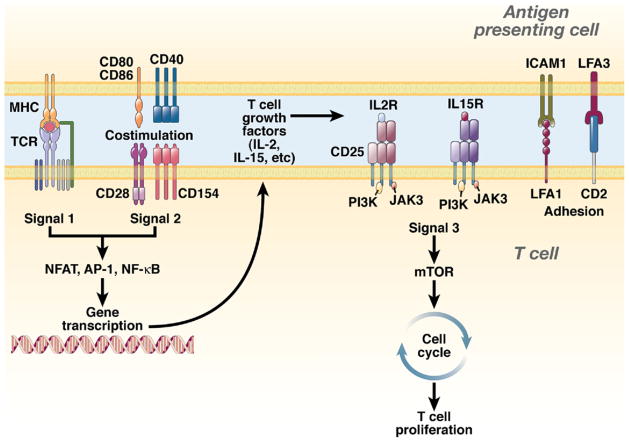Figure 5.
Targets of immunosuppressive drugs used in solid organ transplantation, according to the 3-signal model of T-cell activation. T-cell activation is initiated by signal 1, which is delivered by the interaction between the TCR and the MHC-peptide complex presented by the APC. In transplantation, signal 1 can be delivered through the direct and/or indirect pathways of allorecognition and it defines the specificity of the alloimmune response. Signal 1 alone is not capable of generating productive T-cell responses. However, in combination with signal 2 (also known as the costimulatory signal), signal 1 triggers several intracellular signaling pathways, such as the calcium-calcineurin pathway, mitogen-activated protein (MAP) kinase pathway, and the protein kinase C/nuclear factor κB (NF-κB) pathway; together, these activate transcription factors that mediate cell survival and expression of cytokines. Several cytokines (IL-2, IL-15, IL-4, IL-7, IL-21) induce proliferation (signal 3) through the phosphoinositide 3-kinase (PI3-K) and mammalian target of rapamycin (mTOR) pathways. APCs express different costimulatory molecules; many deliver activation signals that amplify signal 1 and prevent T-cell anergy (eg, CD28-CD80/86 and CD154-CD40 pathways), whereas others inhibit T-cell activation (eg, CTLA4-CD80/86 and PD1-PDL1/PDL2 pathways).

